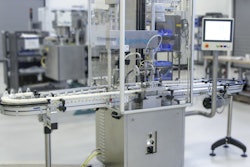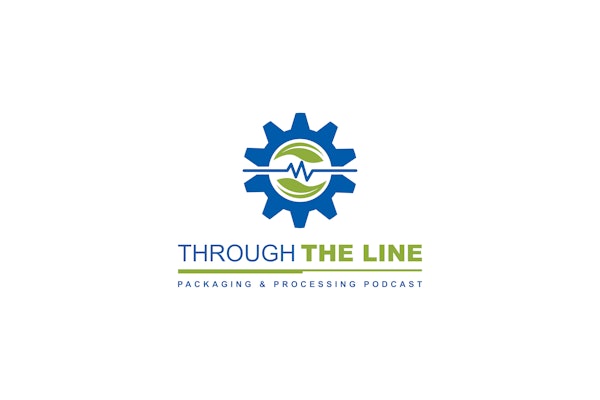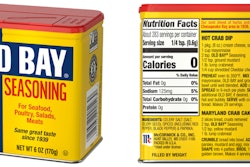Thermoforming applies heat to a clamped plastic sheet so that it softens, after which, vacuum is applied to draw the plastic into a mold (sometimes with a plug assist that helps direct the plastic downward) thereby forming the part, followed by cooling, removal, and trimming. The fact that thermoforming is performed on plastic sheet differentiates it from injection blow molding and extrusion blow molding, which use molten resin. Another distinction is that thermoforming uses open molds, whether female or male, and the other two technologies use molds that close, open, and release.
Thermoforming uses thin-gauge sheet (≤ .060 in.) to make clamshells, blisters, and trays popular in food, non-food retail, and medical--industries characterized by intense competition, and, therefore, the potential to leverage packaging into a competitive advantage. The fulfillment of that potential hinges on capable project management in avoiding missteps, delays, and worse. That’s not to imply that thermoforming projects share little in common with other packaging projects; nonetheless, there are particulars of thermoforming that should be reflected in the approach.
It’s easy to decide whether a thermoformed package can be used for a given product; one only has to know what is a clamshell, blister, and tray and the feasibility component becomes fairly self-evident. The same shorthand analysis holds true for other types of packages that might compete for the same given product; therefore, the decision is not just whether a thermoformed package can be used but whether it should be used. The latter decision requires knowledge of the characteristics shared by thermoforms.
Especially since thermoforms utilize plastics, sustainability is an immediate challenge. The packages, themselves, can be recycled; however, recycling can begin with the trim, for those thermoform suppliers that have the enabling amount of vertical integration. Sustainability is further served because thermoforms can be sized and dimensioned to customized requirements, avoiding undue slack space and extra use of material. And as with all types of plastic packaging, the lightweight nature of thermoforms translates into less energy consumed in transportation and handling.
A signature benefit of thermoforms is diversity, as in diversity of materials. A non-exhaustive list includes, PET, PVC, polyethylene, polypropylene, and high-impact polystyrene. Adding to the diversity is the ability to use copolymers, coextrusions, and laminations. Material diversity results in a diversity of performance properties to meet product protection requirements. Diversity serves in certain product processes; for instance, only certain materials are compatible with hot-filling. The various materials also differ in terms of the thermoforming process, itself; for example, different softening temperatures and drape characteristics can affect process speeds, depth of draw, and material distribution.
Material diversity also has aesthetic benefits. If product visibility is a desired communication, there are candidates that meet that desire. A companion benefit is that the cards included in clamshells and blisters and the lids that top trays lend themselves to high-impact graphics.
As for the convenience function, thermoforms are inherently tamper-evident. On a related note, clamshells, and to a lesser extent blisters, combat retail-theft. Admittedly, it’s a quality that often frustrates consumers, who have difficulty opening the packages after getting them home (a challenge for package designers).
Cost-effectiveness and economy need to be among the boxes checked in determining whether a product should be packaged in a thermoform. Thermoforming scores favorably in that regard. A main reason is that the molds and tooling are less expensive than those required for other technologies, such as injection blow molding and extrusion blow molding. And since time is money──especially under speed-to-market pressures──what’s to be further valued is that, in addition to being less expensive, molds and tooling can be made in less time, again, compared to the aforementioned technologies. As a result, prototypes can be available within weeks, and after approval, production quantities can start being received, say, within a month.
But preceding those receipts, package supplier and package user must have arrived at a meeting of the minds. This essential step requires questions and answers and exchanges of information, all ending in a design brief, against which design concepts are developed.
Starting with the initial face-to-face, too often opportunities to make the meeting more productive are missed, due to not having exchanged certain information, beforehand. It’s not enough for the thermoform supplier to have been informed as to the product category. It’s far more helpful if the product marketer has explained how the product is positioned within the category, that is to say, what differentiates the product and how is packaging expected to contribute to that differentiation. Similarly, the thermoform supplier should distinguish itself by elucidating how its capabilities are suited to the product marketer’s needs. Such early back-and-forth is useful in the screening of suppliers, culling them down to 2 or 3 or whatever number mandated by corporate procurement policy.
For thermoform suppliers that survive initial screening, it’s wise to invite the product marketer to a facility visit. The product marketer’s expectations should exceed seeing machinery in operation; instead, it should be made known that quality assurance will be of primary interest. The science in thermoforming is not merely producing a package but producing it within specified tolerances and in conformance with applicable standards and certifications, such as those of ISO and AIB, respectively.
With turnaround being fair play, thermoform suppliers need to tour the product marketer’s facility, at a minimum, to get an appreciation of the equipment on which the thermoforms will be run. Not all operations involve simply getting the contents into the thermoform and sealing it; a thermoform supplier might have to be acquainted with a particular technology, for example, modified-atmosphere for certain food products.
Sometimes, visits need to extend beyond the product marketer’s facility, as in the case of a medical surgical kit, in which a hospital visit can pay dividends. There, consultations with surgeons and even witnessing surgeries (from the observation deck) can assist in the design of a thermoform that contains the components in an arrangement best suited to the sequence of their use and/or an intuitive arrangement that minimizes mistaken retrievals.
In summary, the shape and form of thermoforms are determined by the shape and form of project management.
Sterling Anthony, CPP, is a consultant, specializing in packaging, marketing, and logistics. His contact information is: 100 Renaissance Center, P.O. Box 176, Detroit, MI 48243; 313-531-1875; [email protected]; www.pkgconsultant.com

























